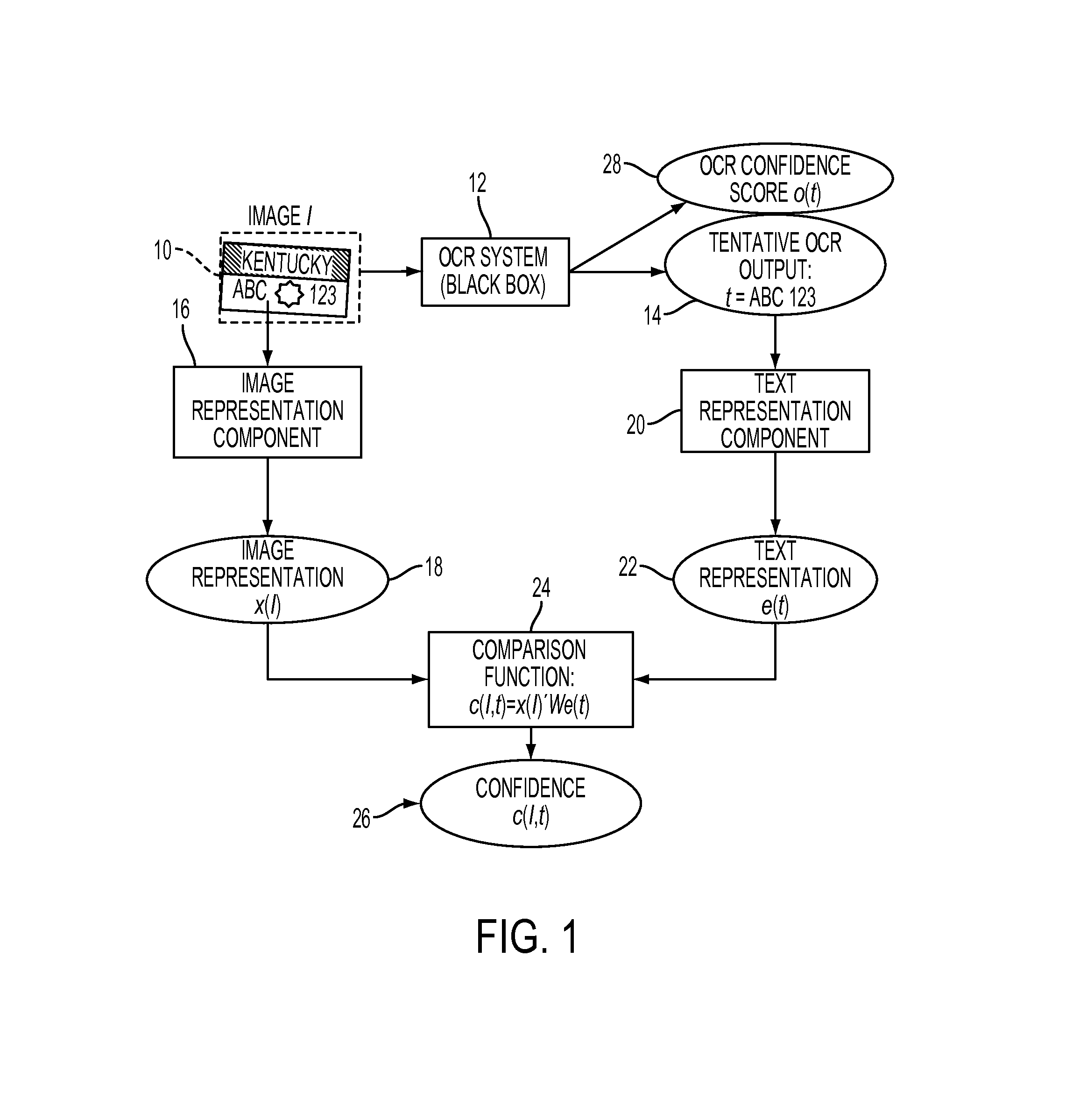System and method for OCR output verification
a verification system and output technology, applied in the field of text recognition in images, can solve the problems of low accuracy, low accuracy, and high cost of ocr error
- Summary
- Abstract
- Description
- Claims
- Application Information
AI Technical Summary
Benefits of technology
Problems solved by technology
Method used
Image
Examples
example
[0146]The exemplary method was evaluated in the context of an electronic tolling application using real data obtained. Specifically, a dataset of 21,497 images 10 corresponding to a week of tolling data was acquired. This batch of images was obtained using an image capture configuration which has not been fine-tuned to ease the OCR output (as is usually the case in license plate recognition systems), and therefore constitutes a challenging set. The images, which were extracted from larger images using automated license plate recognition techniques, are fed to a commercial OCR system for license plate recognition, denoted SOTA, which outputs a candidate license plate number, as well as a confidence score for the string.
[0147]The data was randomly split in two halves; one was used for training and one for testing. For the experiments, Fisher vectors were used for image embedding and the spatial pyramid bag of characters (SPBOC) for text embedding. Matrix W was learned using the Standa...
PUM
 Login to View More
Login to View More Abstract
Description
Claims
Application Information
 Login to View More
Login to View More - R&D
- Intellectual Property
- Life Sciences
- Materials
- Tech Scout
- Unparalleled Data Quality
- Higher Quality Content
- 60% Fewer Hallucinations
Browse by: Latest US Patents, China's latest patents, Technical Efficacy Thesaurus, Application Domain, Technology Topic, Popular Technical Reports.
© 2025 PatSnap. All rights reserved.Legal|Privacy policy|Modern Slavery Act Transparency Statement|Sitemap|About US| Contact US: help@patsnap.com



